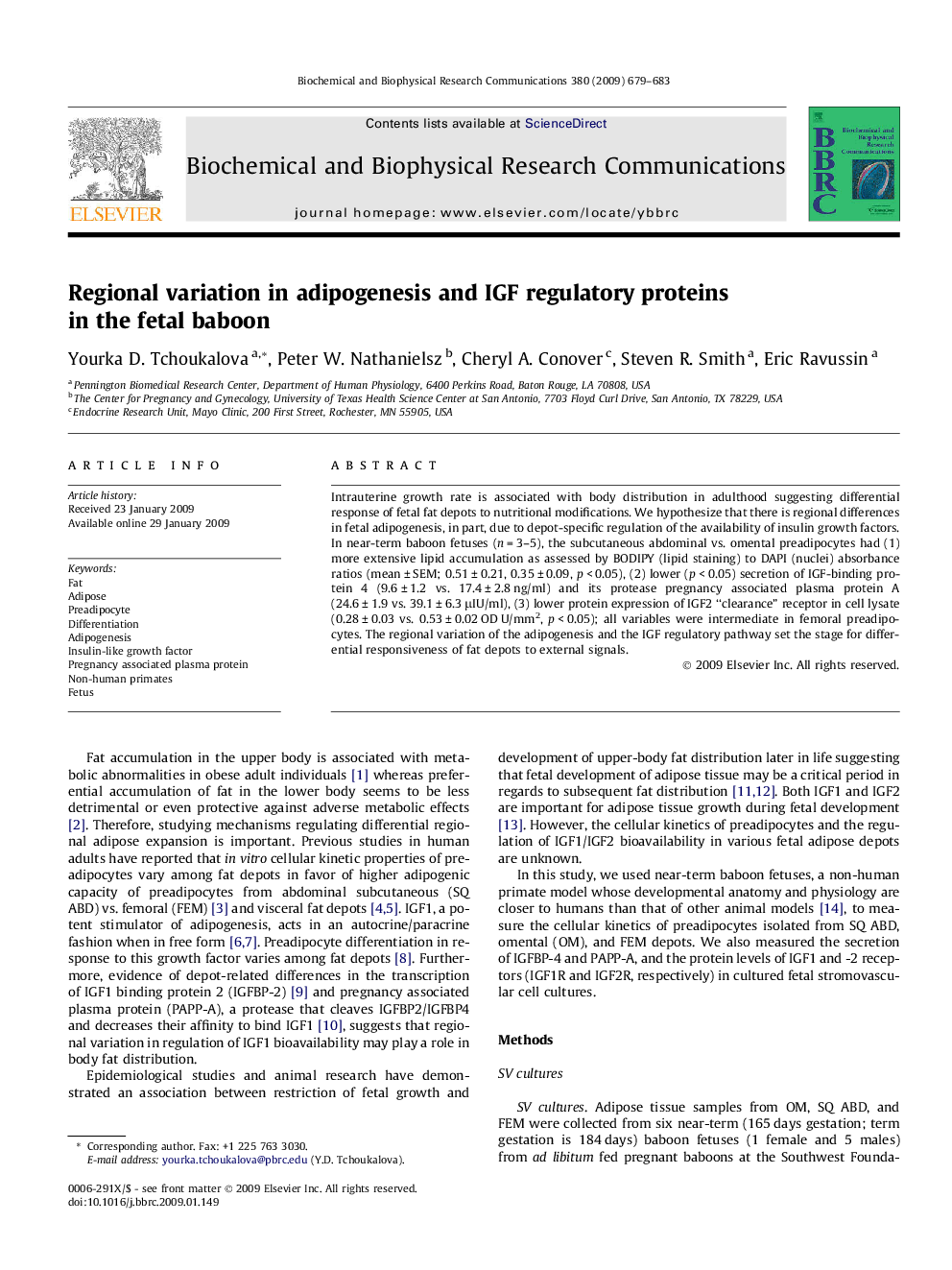| Article ID | Journal | Published Year | Pages | File Type |
|---|---|---|---|---|
| 1933922 | Biochemical and Biophysical Research Communications | 2009 | 5 Pages |
Abstract
Intrauterine growth rate is associated with body distribution in adulthood suggesting differential response of fetal fat depots to nutritional modifications. We hypothesize that there is regional differences in fetal adipogenesis, in part, due to depot-specific regulation of the availability of insulin growth factors. In near-term baboon fetuses (n = 3-5), the subcutaneous abdominal vs. omental preadipocytes had (1) more extensive lipid accumulation as assessed by BODIPY (lipid staining) to DAPI (nuclei) absorbance ratios (mean ± SEM; 0.51 ± 0.21, 0.35 ± 0.09, p < 0.05), (2) lower (p < 0.05) secretion of IGF-binding protein 4 (9.6 ± 1.2 vs. 17.4 ± 2.8 ng/ml) and its protease pregnancy associated plasma protein A (24.6 ± 1.9 vs. 39.1 ± 6.3 μIU/ml), (3) lower protein expression of IGF2 “clearance” receptor in cell lysate (0.28 ± 0.03 vs. 0.53 ± 0.02 OD U/mm2, p < 0.05); all variables were intermediate in femoral preadipocytes. The regional variation of the adipogenesis and the IGF regulatory pathway set the stage for differential responsiveness of fat depots to external signals.
Keywords
Related Topics
Life Sciences
Biochemistry, Genetics and Molecular Biology
Biochemistry
Authors
Yourka D. Tchoukalova, Peter W. Nathanielsz, Cheryl A. Conover, Steven R. Smith, Eric Ravussin,
